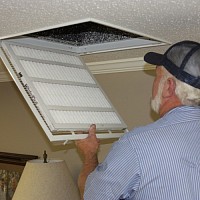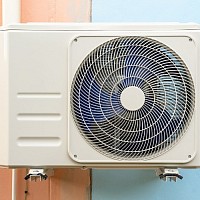Blog
Winter-Ready HVAC Strategies for Inland Southern California Homes
Preparing home heating systems for cooler months demands a practical approach tailored to Inland Southern California’s mild days and chilly nights, where efficiency and reliability matter just as much as comfort, and where furnace repair riverside becomes a timely consideration for many households.
Seasonal Heating Loads and System Sizing
Home heating demand in Inland Southern California fluctuates widely between daytime and nighttime, creating a unique operating profile for furnaces and heat pumps. Oversized equipment can short-cycle, wasting energy and wearing components prematurely, while undersized systems struggle to reach set temperatures. Proper sizing with load calculations considers square footage, insulation levels, window orientation, and air leakage. For example, a single-story ranch home with older single-pane windows may require more capacity than a newer, well-sealed townhouse of similar size. Correctly matched equipment also ensures quieter operation and better humidity control, particularly during shoulder seasons when systems run intermittently. For homeowners noticing uneven temperatures—such as warm hallways but cold bedrooms—reassessing duct sizing and airflow alongside equipment capacity can often resolve comfort issues without upsizing the furnace itself. This right-sizing approach reduces utility waste and extends system life, while making routine upkeep simpler and more predictable.
Airflow, Duct Integrity, and Filtration
Heating performance hinges on steady airflow. Kinked flex ducts, crushed runs in attics, or disconnected joints can lead to hot spots at the furnace and cold rooms at the perimeter. Prioritizing duct inspection before peak heating weeks prevents surprises and keeps blower motors from overworking. Upgrading from a 1-inch filter to a deeper media filter can boost surface area, reducing pressure drop and extending filter life, provided the system is designed for it. In homes near high-traffic corridors, or those with pets, higher MERV filters help capture fine dust and dander, improving indoor air quality without compromising flow when selected properly. Homeowners should replace or clean filters regularly, especially after home improvement projects that produce drywall dust or sawdust. A practical example: a two-story home with warm upstairs and cool downstairs may benefit from damper adjustments and sealing boot connections at registers, restoring balanced airflow. When airflow is right, heat exchangers stay healthier, burners operate cleanly, and comfort improves throughout the home.
Combustion Safety and Heat Exchangers
Gas furnaces rely on precise combustion to produce steady heat. Flame stability, ignition timing, and exhaust venting all interact to maintain safe operation. Heat exchangers must stay intact; cracks or corrosion can compromise safety and performance. Regular inspection of burner assemblies, flame sensors, and pressure switches reduces nuisance shutdowns and protects critical components. In coastal-influenced climates where evening humidity rises, rust can accelerate on untreated metal parts, making preventive checks valuable before cold snaps. Homeowners who notice persistent burner flicker, metallic rattling, or a sulfur-like odor should seek professional evaluation promptly. Consider a scenario where a furnace cycles off shortly after starting: a restricted vent, failing inducer motor, or dirty flame sensor might be the culprit. Correcting these issues early keeps the system dependable and avoids emergency calls during a cold weekend. Integrating carbon monoxide detection on each level of the home adds an extra layer of protection, complementing mechanical safeguards built into modern furnaces.
Smart Controls, Zoning, and Comfort Tuning
Thermostats and zoning strategies fine-tune comfort without excessive runtime. Smart thermostats learn occupancy patterns and adjust set points automatically, curbing unnecessary heating during midday when inland sun provides passive warmth. Zoning can transform multi-level homes by allowing separate temperature targets for bedrooms and living areas. For example, a family that uses a home office upstairs during the day can maintain a cozy workspace while keeping unused rooms at a modest setback. Pairing zoning with carefully calibrated supply registers and return paths prevents pressure imbalances that would otherwise whine at door undercuts or cause drafts. Smart controls also deliver alerts for filter changes or irregular cycles, giving homeowners an early nudge to address small issues before they become expensive. When combined with a well-commissioned system—proper gas pressure, clean burners, and balanced airflow—these controls keep bills steady and rooms consistently comfortable.
Maintenance Routines and When to Call a Pro
A consistent maintenance plan pays off. Homeowners can handle monthly filter checks, clear the area around the furnace for ventilation, and keep supply and return registers unobstructed by furniture or rugs. Visual checks for water around the furnace base in systems with condensate lines help catch clogs early. Still, tasks like combustion analysis, heat exchanger inspection, blower wheel cleaning, and gas-valve calibration belong to qualified technicians. The cues to call for help include unusual odors during startup, repeated tripping of safety switches, or a thermostat that calls for heat but produces only short, unsuccessful ignitions. In regions where morning lows dip abruptly, scheduling service before the first cold spell is prudent, and for residents seeking timely assistance, furnace repair riverside is often a practical route to restore comfort quickly. Proactive care not only minimizes downtime but also preserves manufacturer warranties and keeps systems operating at peak efficiency throughout the season.
Winter-Ready HVAC Strategies for Inland Homes and Businesses
Cold snaps don’t last long in Southern California, but when temperatures dip, a well-tuned heating system keeps indoor spaces safe, efficient, and comfortable.
Prioritizing Preventive Maintenance for Reliability
A seasonal maintenance routine is the backbone of dependable heating performance. Dust accumulation on burners, clogged filters, and misaligned blower belts all contribute to uneven heat, noisy operation, and unnecessary energy use. A clean filter helps airflow remain strong, which minimizes strain on the blower motor and improves comfort in rooms furthest from the air handler. During a tune-up, technicians verify gas pressure on furnaces, inspect heat exchangers for signs of wear, and calibrate thermostats so set points reflect actual room temperatures. For hydronic systems, bleeding radiators and checking expansion tanks prevents air pockets that cause cold spots. A practical example: a small office that schedules a fall inspection often avoids mid-season breakdowns, maintaining steady productivity and reducing reactive service calls.
Furnace Repair and Safety Considerations
When a heater falters, diagnosing early protects both equipment and occupants. Common warning signs include short cycling, unusual smells at startup, and cold air from supply vents even when the thermostat calls for heat. Ignition problems, dirty flame sensors, and worn inducer motors can all interrupt proper combustion. For homeowners and property managers seeking furnace repair riverside professionals often look for, it’s wise to shut the system down if there’s persistent soot, frequent tripping of safety switches, or visible corrosion around the burner assembly. Carbon monoxide concerns demand immediate attention; while modern furnaces incorporate safeguards, a malfunctioning exhaust or cracked component can elevate risk. Practical steps include installing CO detectors near sleeping areas, keeping the area around the furnace clear of storage, and ensuring the condensate drain line is unobstructed on high-efficiency models. A retail space that lost heat during a busy weekend, for example, restored service quickly by addressing a failed flame sensor that had been intermittently misreading the flame, preventing full ignition.
Optimizing Air Distribution and Duct Performance
Heat that never reaches living areas is wasted energy. Leaky ducts in attics or crawlspaces can spill conditioned air into unoccupied areas, leading to uneven temperatures and higher utility costs. Sealing joints, adding insulation around exposed sections, and balancing supply registers can transform comfort. Consider a two-story home where the upstairs overheats while the downstairs remains chilly; an airflow assessment may reveal undersized returns or dampers out of position. Adjusting those components, along with replacing restrictive filters with the manufacturer-recommended MERV rating, can bring rooms back into balance. In light-commercial settings, proper zoning with programmable thermostats keeps conference rooms comfortable during meetings without overheating vacant corridors. Regularly clearing return grilles from furniture or drapes also supports better circulation and reduces strain on the blower assembly.
Thermostat Strategy and Smart Controls
Heating efficiency often hinges on how intelligently the system runs. Programmable and smart thermostats create consistent schedules that match occupancy patterns, preventing the frequent temperature swings that stress equipment. For instance, setting a moderate setback while occupants sleep, then ramping up before wake-up, reduces run time without sacrificing comfort. Remote access helps facility managers respond to unexpected weather, while learning features adapt to a building’s thermal characteristics. Pairing controls with indoor air quality sensors can prompt timely filter reminders and alert users to abnormal humidity or extended run times that hint at a developing mechanical issue. In multifamily properties, lockable set points prevent extreme adjustments that lead to energy waste. Clear thermostat placement away from drafts, sunlight, and heat-generating electronics ensures readings reflect actual occupied conditions, improving consistency across the space.
Preparing for Peak Season and Emergency Readiness
Even in milder climates, a cold front can trigger a surge in service requests. Being prepared keeps the heat on when it matters most. Stock spare filters, keep the furnace area accessible, and note the model and serial numbers of major components to streamline communication with service providers. Property managers can create a quick-reference checklist: date of last tune-up, locations of gas shutoff and electrical disconnects, filter sizes, and notes on any recurring noises or error codes observed at the control board. For homes that depend on a single heating appliance, a portable, code-compliant space-heating contingency plan can provide temporary comfort while awaiting professional repairs. After any service, monitor the system through a full heating cycle, listening for unusual vibrations and verifying that all rooms reach the target temperature. This disciplined approach reduces downtime and extends equipment life, ensuring that comfort and safety remain consistent throughout the season.


